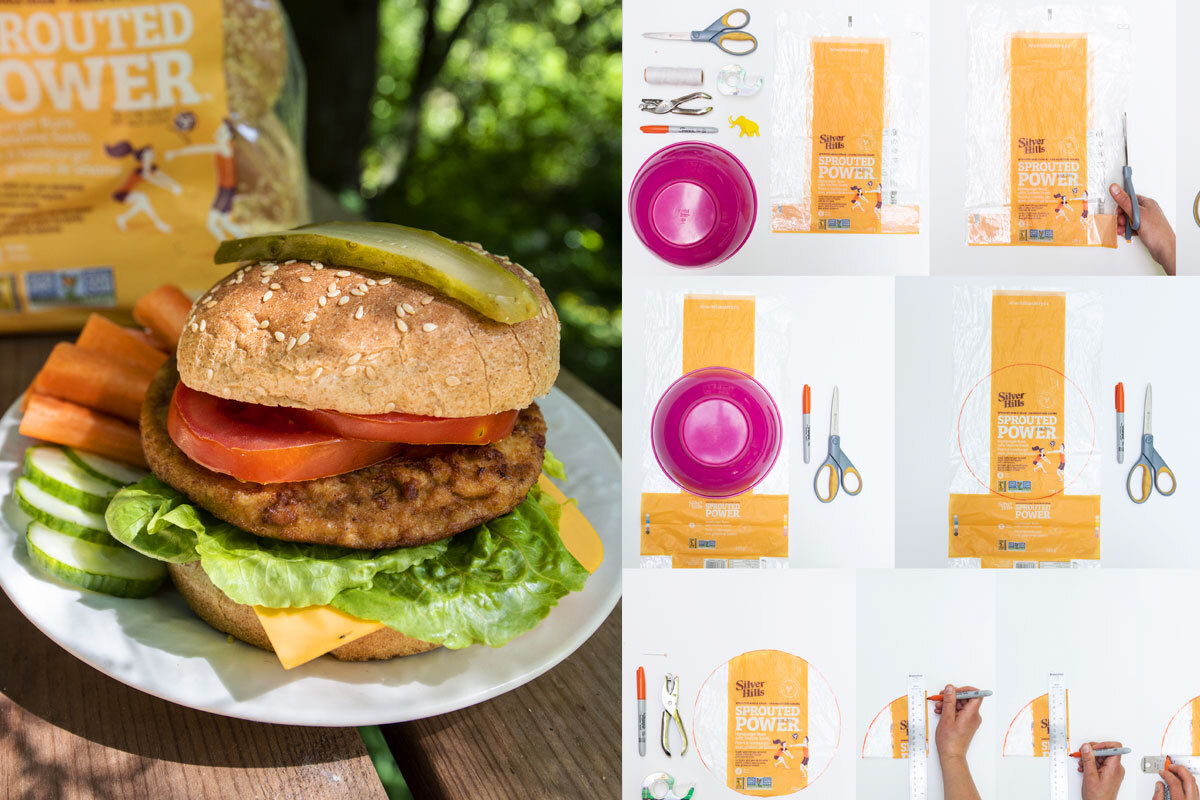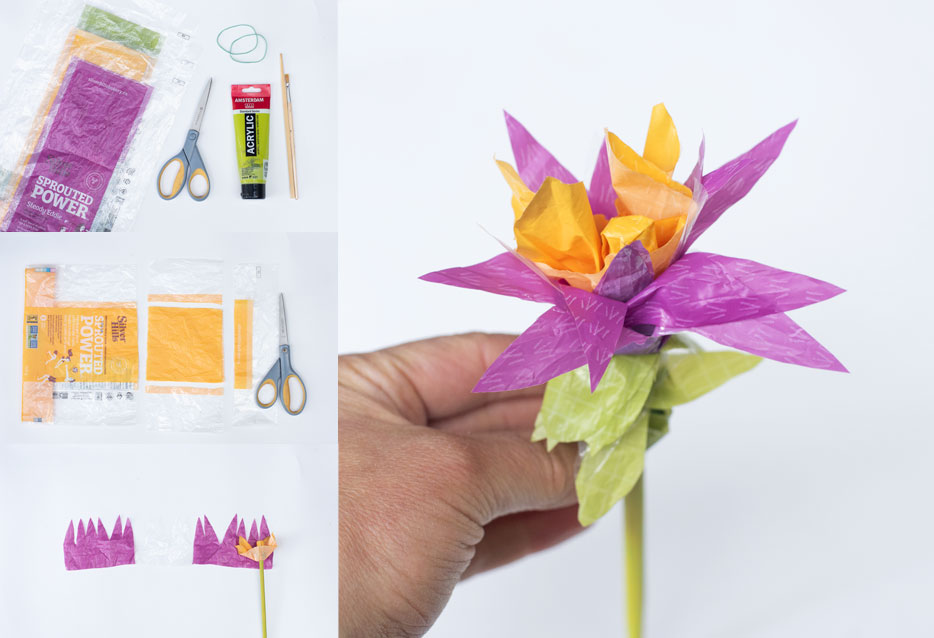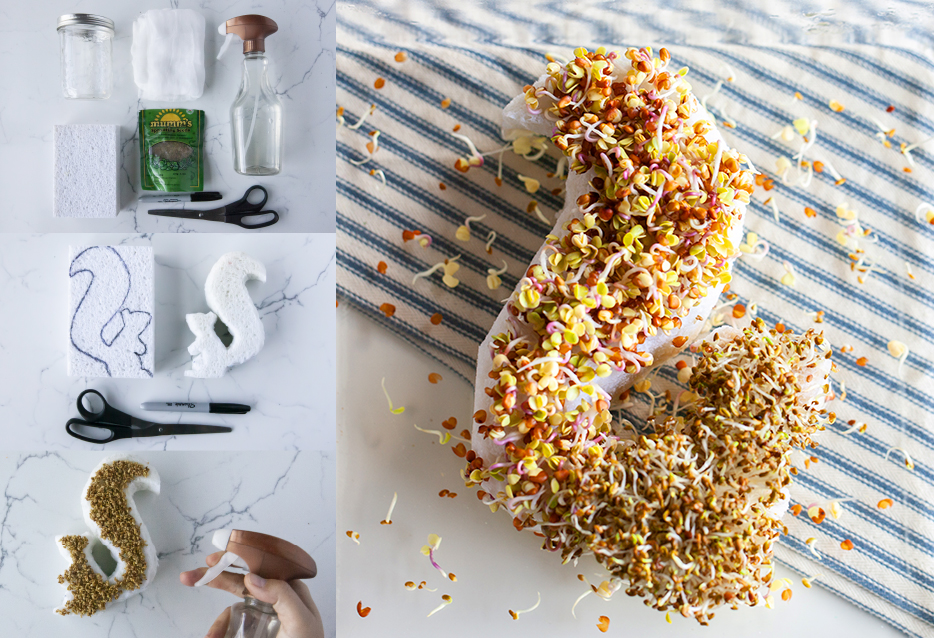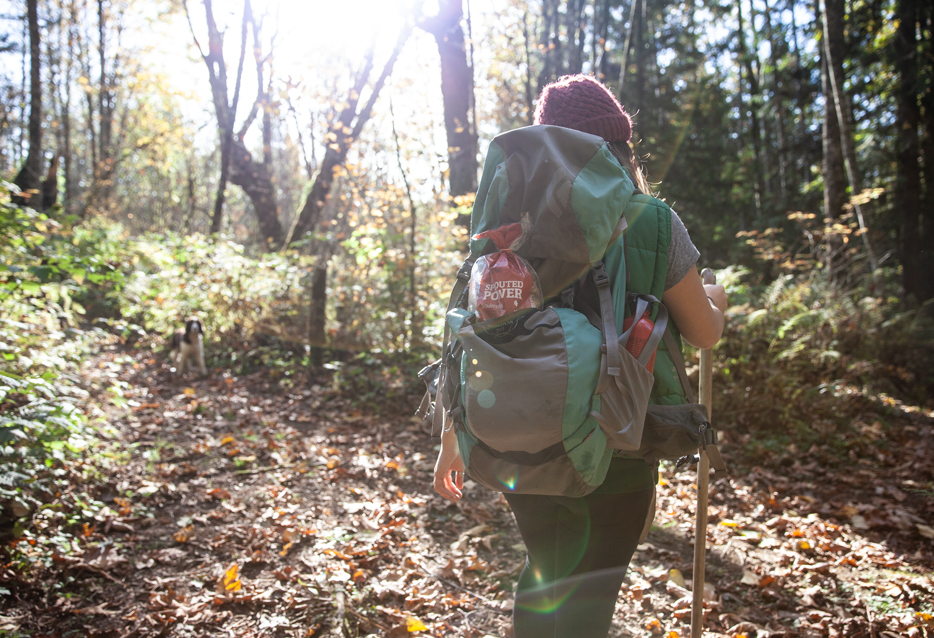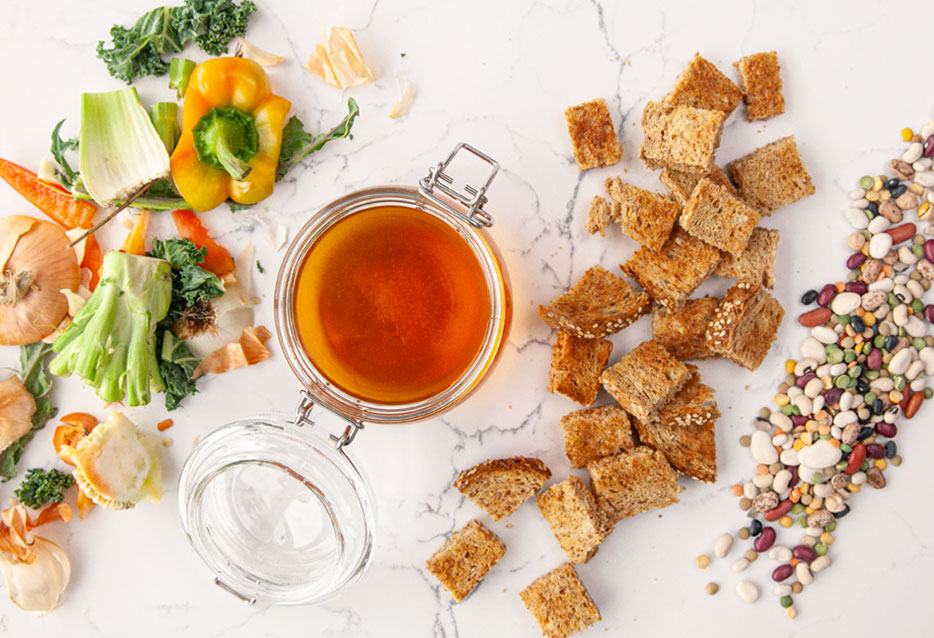Article STEM Activity for Kids: Bread Tag Boats
Harness the power of science to turn bread tags into speedboats!
November 08, 2022
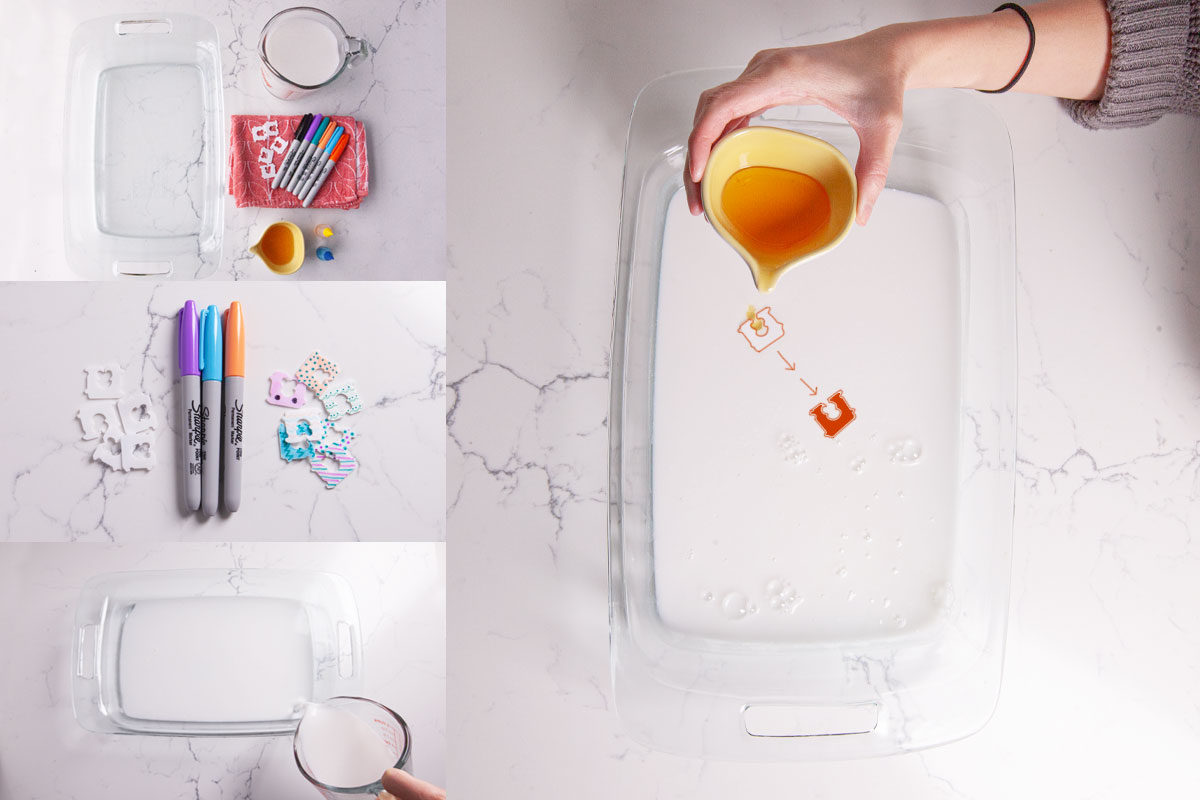
Hang on to a handful of bread tags, set a shallow container on your counter, gather some kitchen staples, and let this kid-friendly Bread Tag Boats STEM Activity swish away rainy-day boredom with a swirling trail of colour!
A simple drop of soap will inspire squeals of delight as little kids send their tiny boats sailing. And older at-home scientists will a get a first-hand introduction to Newton’s Third Law of Motion, surface tension, and the Marangoni Effect that’s sure to set their curiosity afloat and nurture a love of science!
We’ll admit this STEM activity isn’t new—it’s usually done on water or dairy milk. Water has a one-boat, one-shot limitation that means you have to empty, rinse, and refill your countertop lake after every race. Dairy milk lets eager boaters race again and again. But as a plant-based brand, we wanted to make this STEM activity dairy-free—and overcome the limitations of water alone to power the bread tag boats over and over!
Never ones to let a little challenge get in the way of good, clean, learning fun, our team went on a mission to make this experiment work with vegan ingredients. We did our own trial and error experiments at home—with our own kids—so you wouldn’t have to.
And the result is a 100% plant-based STEM activity sure to keep your kids engaged, entertained, and excited by science. All using repurposed bread tags, dish soap, and one secret ingredient: soy milk.
Click here to get the instructions you need to make this fun kitchen experiment, or keep reading to learn how we solved the puzzle with soy milk.
(Scroll past the Tips or click here to learn more about the science behind this experiment).
Why Soy Milk? The Test-and-Learn Approach Behind this STEM Activity
Unlike other recipes on our website that call for any unsweetened non-dairy milk, this isn’t one of those situations where one substitute is as good as any. In our pursuit of a plant-based swap for dairy, we tested this family-friendly science experiment with almond milk, oat milk, coconut milk, and rice milk. None of them worked. As we tested our way through the non-dairy beverage aisle, we experienced failure after failure. Until we tried soy.
Other non-dairy milks performed no better than water—only working once and only for a few short seconds before our soap-fuelled boats coasted to a disappointing stop, unable to start again. While water is (usually) plentiful, constantly rinsing and refilling a lake of non-dairy milk after a single use felt quite wasteful. Even for the sake of science.
But with soy milk, kids of all ages can do this STEM experiment over and over, and their bread tag boats will keep on racing! Soy milk has a fat and protein profile that’s the closest to dairy milk compared to other plant-based options. Which means it has the just-right stuff to stand up to the soap and make our vegan version of this STEM activity work as well as the original—minus the moo.
(Although adding soap to a shallow lake of soy milk makes it undrinkable, being able to race our bread tag boats over and over on as little as a half a cup makes that small investment in the cause of STEM learning feel no more wasteful than what gets spilled in an average week in a house with kids!)
Make Learning Fun!
Read on for racing tips. And don’t hesitate to get creative and turn STEM into STEAM* for this activity. Use permanent markers to decorate your boat—kids can customize their bread tag boats with style and pick out their favourite colour for the trail! (Make sure to use water-based food colouring as opposed to gel food colouring).
*STEM stands for Science, Technology, Engineering, and Math. STEAM adds an A for Arts in recognition that the arts and humanities provide context and facilitate creativity that enables breakthrough innovation in STEM fields. Educators agree kids need both!
Recommended Ages
3 – 7 (supervised)
8+ (unsupervised)
Materials
- Large shallow container (such as a casserole dish, plastic bin, or baking pan), 8-inches x 11-inches or larger
- ½ cup – 2 cups non-GMO soy milk (do not substitute soy for other non-dairy milks. Volume depends on container size, see Step 2)
- Silver Hills Bakery bread tags
- Toothpicks
- Dish soap
- Liquid food colouring (water-based, not gel)
- Permanent markers (for decorating)
Bread Tag Boats: Step-by-step Photo How-to
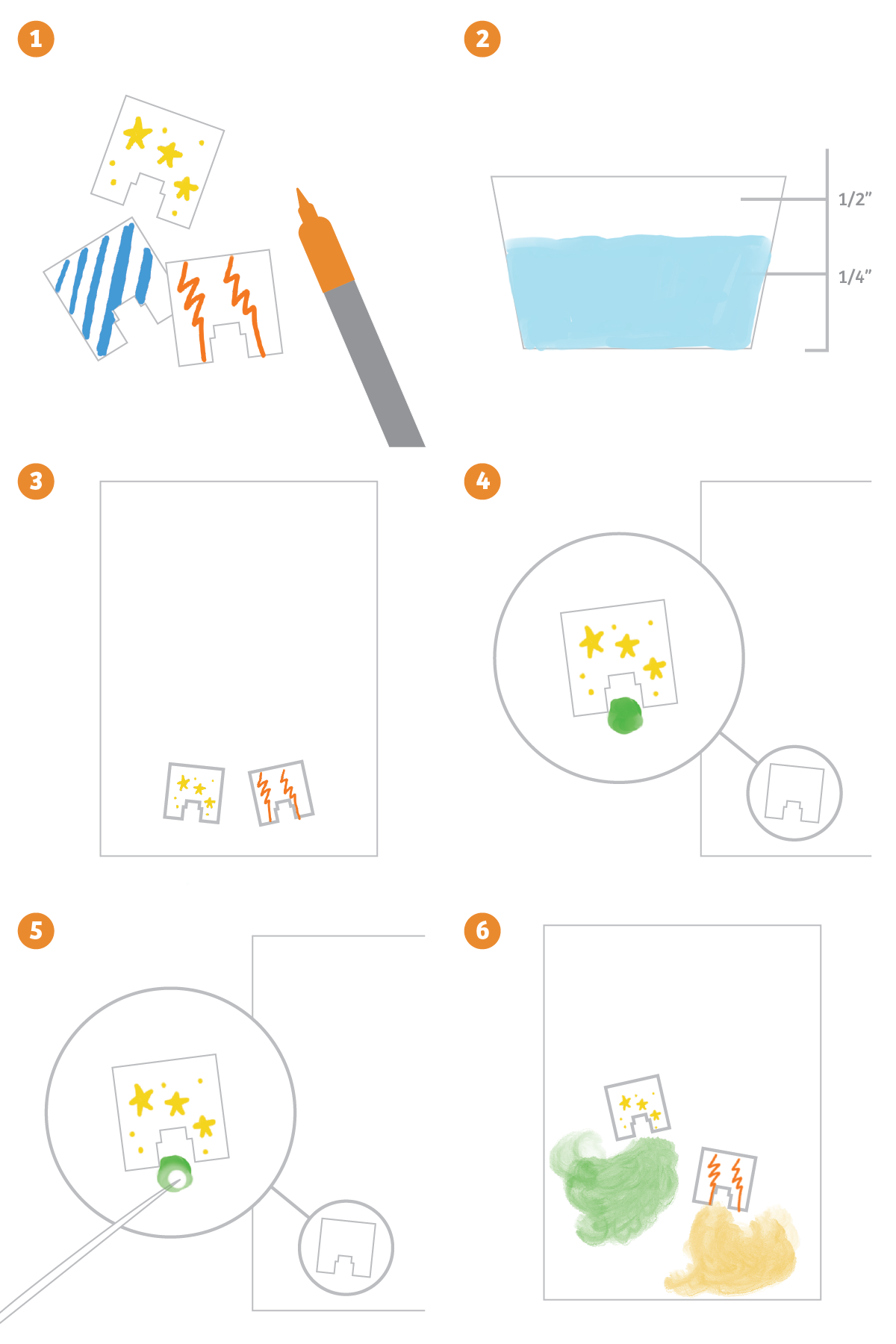
Step 1: Decorate your bread tags.
If your bread tags are white, they won’t stand out well on the white soy milk background. Decorate them with colourful permanent markers to make them pop—and to tell each racer’s boat apart easily!
Step 2: Fill your container with ¼ – ½ inches of soy milk.
It should be just enough to cover the bottom of your container and float your bread tag boats.
Step 3: Place your bread tag boats gently on top of the soy milk at one end of the container.
The hole is the stern (back) of your bread tag boat—pretend it’s the propeller!—and the solid end is the bow. To give your bread tag boats the longest lake to race on, make sure the stern is facing the closest edge of the container on the end you’ll use as your starting line, and the bow is pointing to the finish!
Step 4: Add 1 drop of food colouring into each hole at the back of your bread tag boat.
(If you have more than one child with a bread tag boat and plan to race, try using one colour for each!)
Step 5: Dip toothpick(s) in a small dab of dish soap and get ready to race!
Pour a small amount of liquid dish soap into a cup or bowl. Dip the tip of the toothpick into the dish soap to collect your first drop. (If you have more than one bread tag boat, have each racer/kid use their own toothpick to collect a drop for their boat).
Use the toothpick to place 1 small dab of soap into the hole at the back of the bread tag boat with the food colouring. (To start a race, make sure each racer is ready to dab at the same time with an enthusiastic “On your mark, get set…GO!!”)
Step 6: Race and Rematch!
Watch the colours swirl as your bread tag boats skim across the surface of your little soy milk lake! And repeat (see Tips).
STEM Activity Tips:
Design Tips:
- Whether you’re running multiple bread tag boats as a race, or you’re having a friendly, non-competitive float on a soy milk lake, try using a different colour of food colouring for each boat so you can trace its swirling path.
Engineering Tips:
- Choose a bread tag that is completely flat. Bread tags that have been twisted and have uneven tabs are harder to float and may not contain the food colouring or dish soap well.
- For best results, let the soap fuel run out until the bread tag boat comes to a stop before adding more soap. If a boat gets caught in a corner or runs into the end of your countertop lake, you can get more scoot out of it by using the non-soapy end of a toothpick to point the bow in a new direction.
- With the soy milk, we were able to get a dozen soap-drop scoots out of a boat in one shallow lake before we stopped counting. How many times you can go will probably depend on how many racers, how much soap you use, and the volume of soy milk in your lake. If your boats stop scooting after a fresh drop of soap and your day of boating doesn’t feel done, you’ll need to reset your activity with a fresh lake of soy milk. Make sure you wash and dry your container so there’s no soap residue left behind to shorten your next round!
- Please note: soy milk is the only dairy alternative milk this STEM activity will work with (that we know of).
For older kids with curiosity to spare, this section explains the three physics concepts that make our bread tag boats scoot with a single drop of soap: surface tension, the Marangoni Effect, and Newton’s Third Law of Motion.
Surface Tension
Have you ever slightly overfilled a glass with water so that the surface is just above the rim? When the water goes above the edge of the glass but doesn’t spill, you’ve been saved by the power of surface tension!
All liquids have surface tension because liquid molecules like each other a lot! This like-to-like attraction is what keeps the liquid bonded together, even under the pressure of the air around us. And the phenomenon of surface tension is also what makes our bread tag boats float—just like water strider insects on a pond!
Marangoni Effect
The Marangoni Effect describes how motion can happen in a liquid due to surface tension gradients.1 Those are some big words that explain what you see when you add your drops of dish soap to the soy milk through the hole in the back of your bread tag.
Dish soap is something called a surfactant. Here’s an analogy to help explain what that means: Imagine two best friends at a school playground who get invited to play a game with kids who are new to the school. In a surfactant like dish soap, the soap molecules (like the best friends) don’t hang onto water molecules (new kids) as tight as they hang onto each other. If a surfactant molecule is placed between two water molecules, the tension between the water molecules is reduced, so they let go of each other more easily. This is how soap is able to break up other substances, like the oil on your dirty dishes.
Next imagine each soap molecule has a head and a tail, and the head and the tail like different things. The head really likes water. And the tail really likes oil (or in the case of our soy milk, fat). When the head finds water and the tail finds oil, the soap molecule acts like a duck fishing in a pond—head down, tail up.
Combine the surfactant action and the head-down/tail-up action, and a drop of dish soap added to water sends nearby water molecules scurrying away across the surface, reducing the surface tension of the water as they go.2 (You can see this in your sink when you wash your dishes. Next time you wash a bowl that had a colourful sauce with some oil in it (like pesto), fill it with warm water, then watch what happens to the oil on the surface when you add a squirt of dish soap before you start scrubbing!).
Newton’s Third Law of Motion
Newton’s Third Law of Motion states that for every action, there is an equal and opposite reaction.
A simple example of Newton’s Third Law in action? When you blow up a balloon then let it go, the air rushing out of the hole causes the balloon to zoom away in the opposite direction.
Now let’s apply these ideas—surface tension, the surfactant action and duck-dive water-seeking behaviour of soap molecules (the Marangoni Effect), and Newton’s Third Law of Motion—to our bread tag boats.
When we add the dish soap to the hole of the bread tag floating on our shallow pond, the soap molecules reduce the surface tension on the hole-side of the bread tag first. Because the surface tension on the other side of the bread tag boat is much greater, the boat is pulled along the surface of the liquid. This gives the illusion that it is being propelled from the back like a speedboat!
If the pond is only water, the surface tension change is short-lived. It’s the fats and proteins in the soy milk—and how the soap molecules interact with them through the Marangoni Effect—that give our bread tag boats the power to race again and again.
STEM Fun at Home Today. The Future of Science Tomorrow.
Kids: We’d love to tell you exactly what’s happening between the soap and the soy milk. But we can’t. Why? Because no one has studied that yet! So, if you want the whole soap and soy milk story, you’ll have to become a scientist when you grow up!3
Grown-ups: And that’s why STEM activities like this one are more than just rainy-day fun—because you never know where a spark of curiosity could ignite or what kind of STEM career it could lead to! Playing with Bread Tag Boats on the kitchen counter could open the door to a breakthrough in chemistry or engineering that changes the world for the better someday.
Is this easy STEM activity a hit? Find more fun and easy science crafts below.
